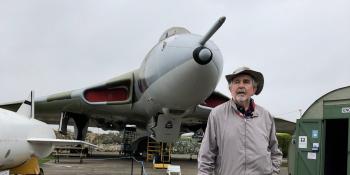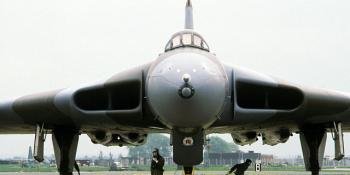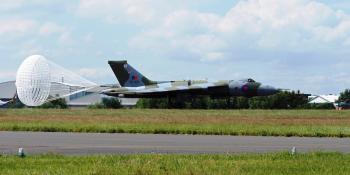Avro Vulcan
The Avro Vulcan is one of the true icons of historic aviation. The aircraft started out as a key part of Britain's independent nuclear deterrent in the Cold War era and almost everyone had a soft spot for it - largely thanks to XH558. Its incredible restoration, thanks to the work of the Vulcan to the Sky Trust, thrilled airshow crowds up until 2015, but it still has a role to play in inspiring the next generation of aviation engineers. Find out more about the British aircraft and its history since its first flight in 1952.
Vulcan videos, features and news
Royal Air Force and the Vulcan
When the long anticipated Vulcan first rolled off production lines in 1956, nobody could know just how much effort would go into preserving the manmade, delta-shaped beast for years to come. It would go on to serve in the Royal Air Force for 28 years, but that wouldn’t be the last of the Vulcan – not by a long shot. Unlike so many before it, the Avro Vulcan has held such a special place in the hearts of many that since its retirement, it has only gained in popularity. Now, the bomber has spent more time in retirement than it ever did in active service. Despite this, the legacy of the aircraft continues to go from strength to strength, courtesy of Avro Vulcan XH558 and the dedicated team behind her at the Vulcan to the Sky Trust.
AVRO VULCAN BOMBERS
A.V. Roe and Company designed the Avro Vulcan in response to a specification set by the British Air Ministry. It was nothing like anything anybody had ever seen before: it was a jet powered, tailless delta-winged giant that was the first of its shape to be a production aircraft in the RAF. The Avro Vulcan was also in stark contrast with its older cousin the Avro Lancaster, which had been designed only 10 years earlier. Gone were the propellors and straight wings of the past. The Avro Vulcan introduced a new generation of bombers that not only looked futuristic but were capable of things that, once upon a time, could never have been dreamt of.
Despite its enormous exterior presence, the inside of the Vulcan bomber was incredibly tight. While the vast majority of the bomber’s size can be attributed to its delta wing construct, space for the crew seemed like it had been a secondary consideration at the design stage. As a result, the space in which the crew could operate was minimal to say the least. The crew was made up of five airmen: the pilot, co-pilot, AEO, Navigator Radar and the Navigator Plotter. While the pilot and co-pilot took centre stage right at the front of the aircraft, the other three crew members were crammed into the space behind them. Although the pilots of the aircraft were positioned at the front, visibility from inside the cockpit was notoriously poor. This wasn’t a major issue, however, as the aircraft was designed to rely on navigational radar systems to see its flight path. The Vulcan had performance and agility more akin to a fighter than a conventional bomber, particularly at high altitudes. Its four Rolls-Royce Olympus engines, famous for their deafening howl, were an early version of the engines that would later go on to power the world’s first supersonic airliner, the Concorde.
DESIGNED TO HOLD NUCLEAR WEAPONS
As a strategic bomber, the Vulcan’s role during its active service in the Cold War was to be capable of delivering British-constructed nuclear bombs to targets in the Soviet Union. Although they never used a nuclear weapon in service, the Vulcan was utilised during the Falklands War in Operation Black Buck and afterwards in reconnaissance and air-to-air refuelling training. After the Vulcan fleet was retired from military service in 1984, just one example was restored to flight for use in air displays and air shows: XH558.
AVRO VULCAN NOW
It wasn’t the only complete airframe to remain, as two were also kept in taxiable condition in Southend-on-Sea and Wellesbourne. However, XH558 has continually been funded by the public in order to preserve her as part of a crucial period of history. And now, the Vulcan to the Sky Trust and Operation Safeguard are looking to ensure that XH558’s legacy remains for future generations.










